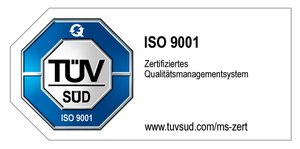Form and position tolerances
Form and position tolerances are a subarea of Geometric Product Specifications (GPS). They provide a way of using technical drawing entries to tolerate the geometric deviation of components. Among other things, this allows manufacturing costs to be optimized. The definition of tolerances is indispensable for modern development and manufacturing processes, because they allow individual parts to be interchangeable and thus enable mass production and series production of the same. Form and position tolerances limit the permissible deviation of an object from its ideal geometry, but also the permissible deviation in position; a distinction is made between form, direction, location and running tolerances. Within these categories, certain symbols are assigned to precisely defined properties with which the geometric and positional details are expressed. The definitions and correct use of the symbols are regulated by DIN or ISO standards. If no geometric tolerance is specified on a drawing, the general tolerance regulated by the ISO standard applies. The standardization of technical drawings not only simplifies tolerance management, but also communication between all parties involved in planning and production processes.
Shape tolerances:
- Straightness
- Flatness
- Roundness
- Cylindricity
- Profile of a line
- Profile of a surface
Directional tolerances:
Location tolerances:
- Position
- Concentricity/Coaxiality
- Symmetry
Running tolerances:
- Radial runout / Axial runout
- Total radial runout / total axial runout
We find the perfect solution for your project.
Contact us if you have questions to our services in the area of 3D metrology. We are looking forward supporting you in your success.



